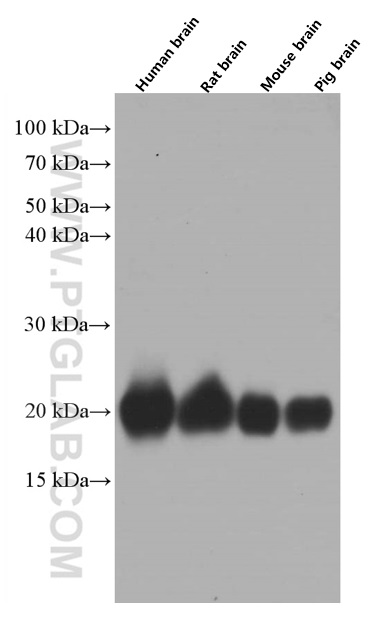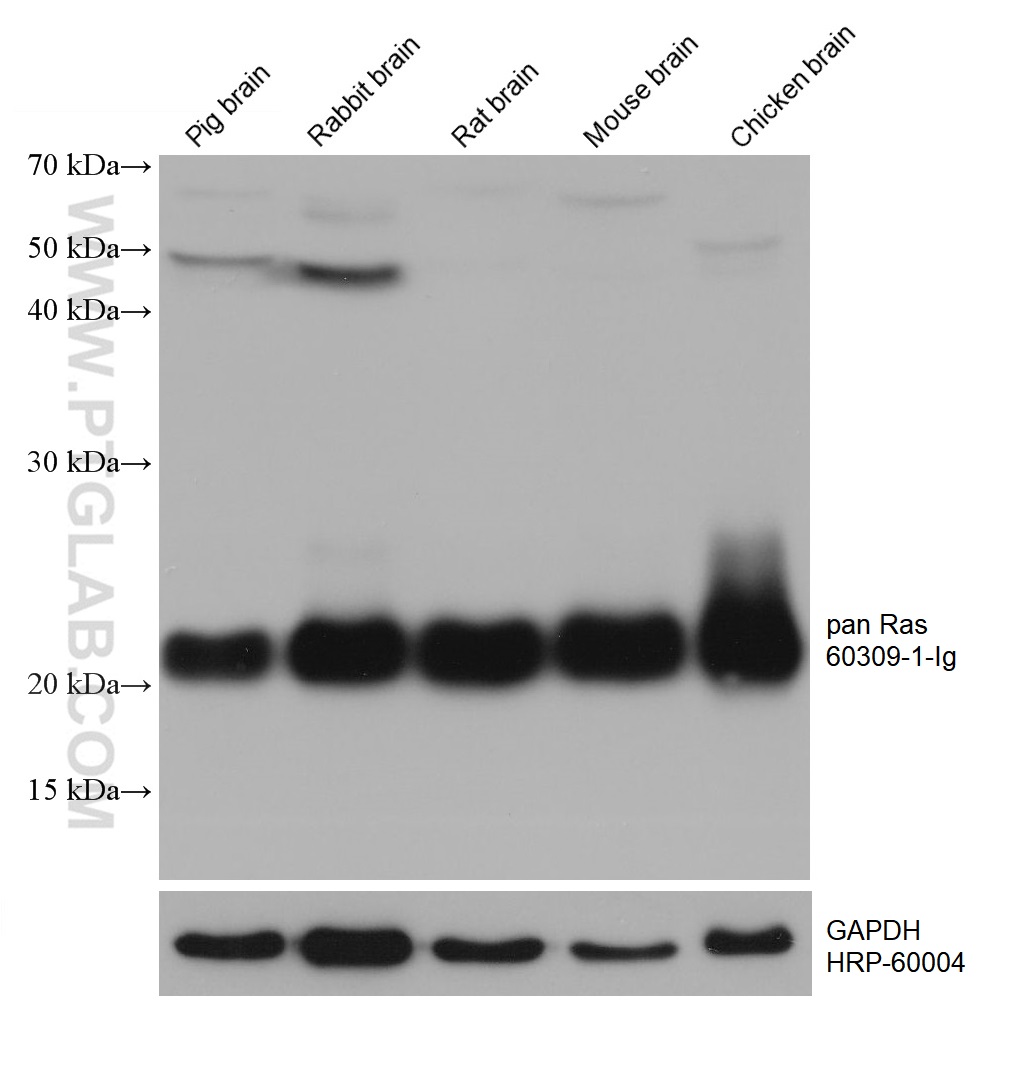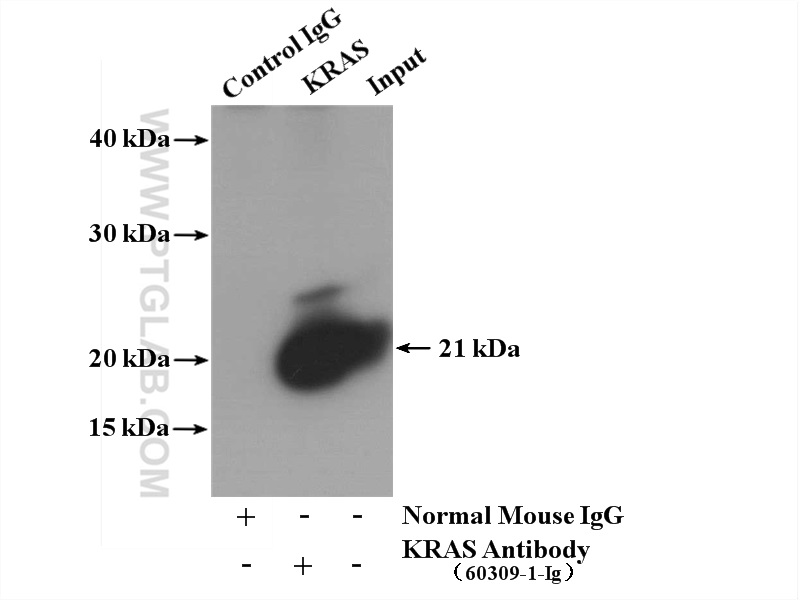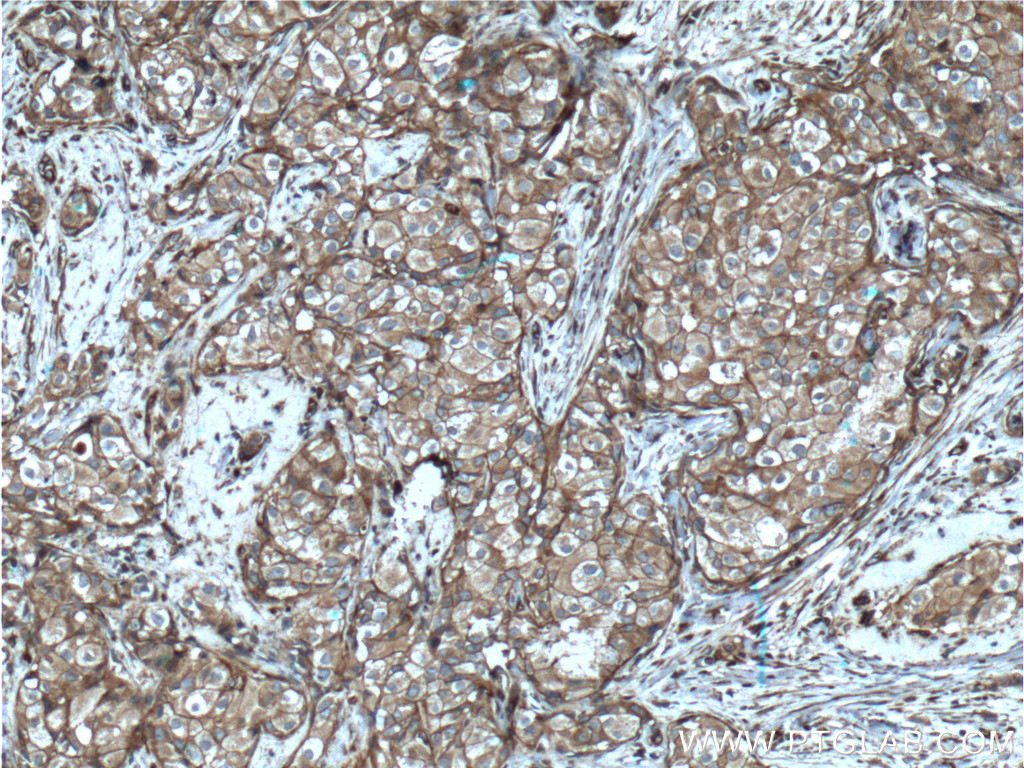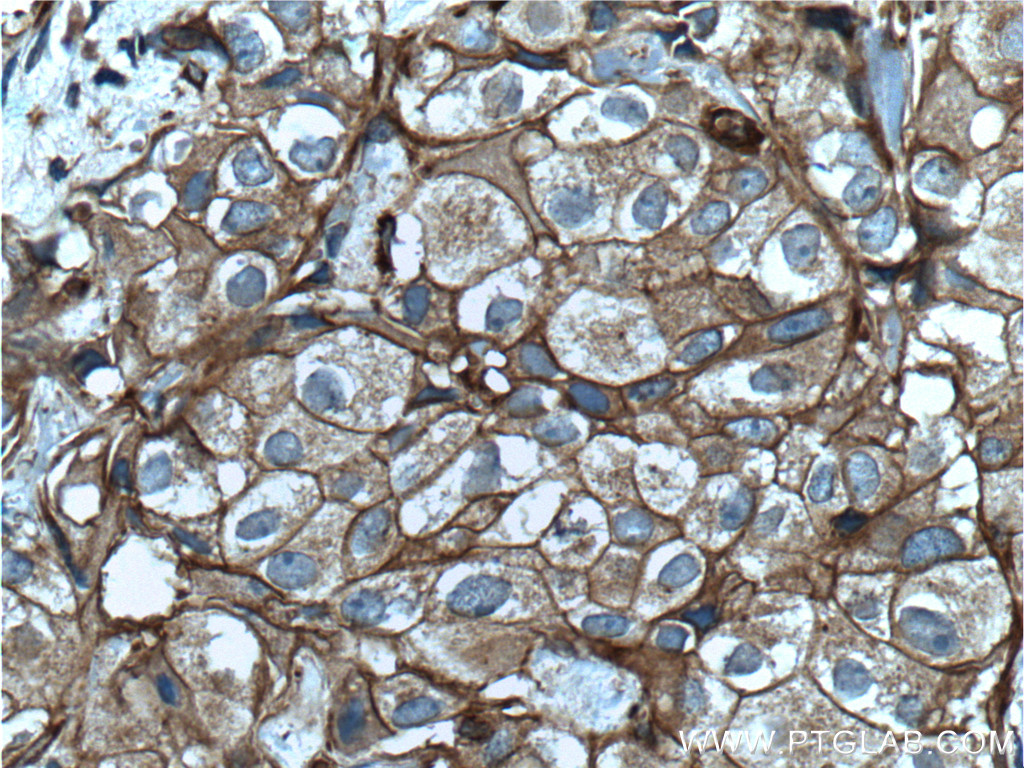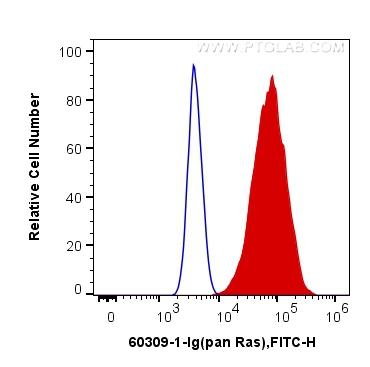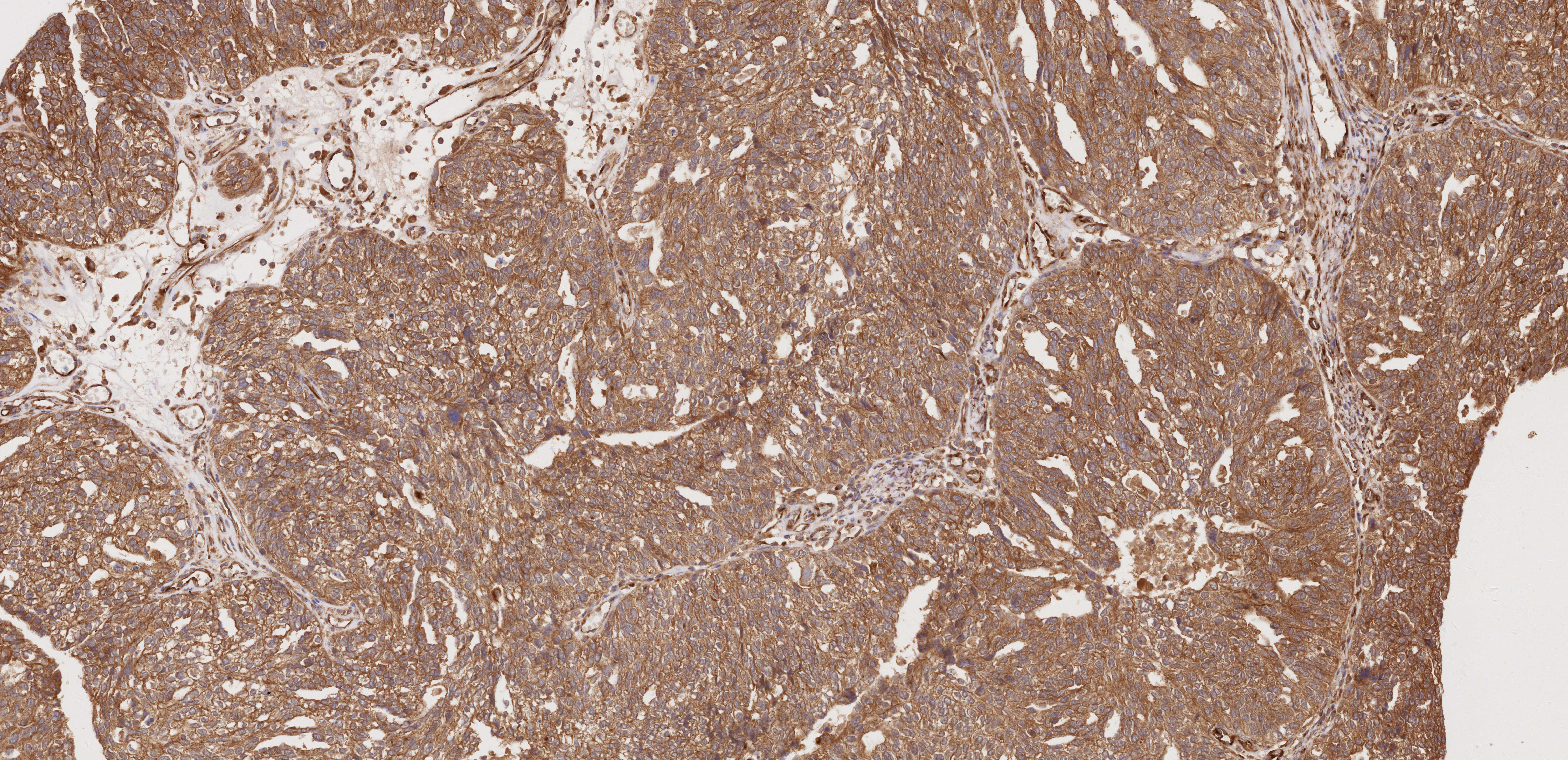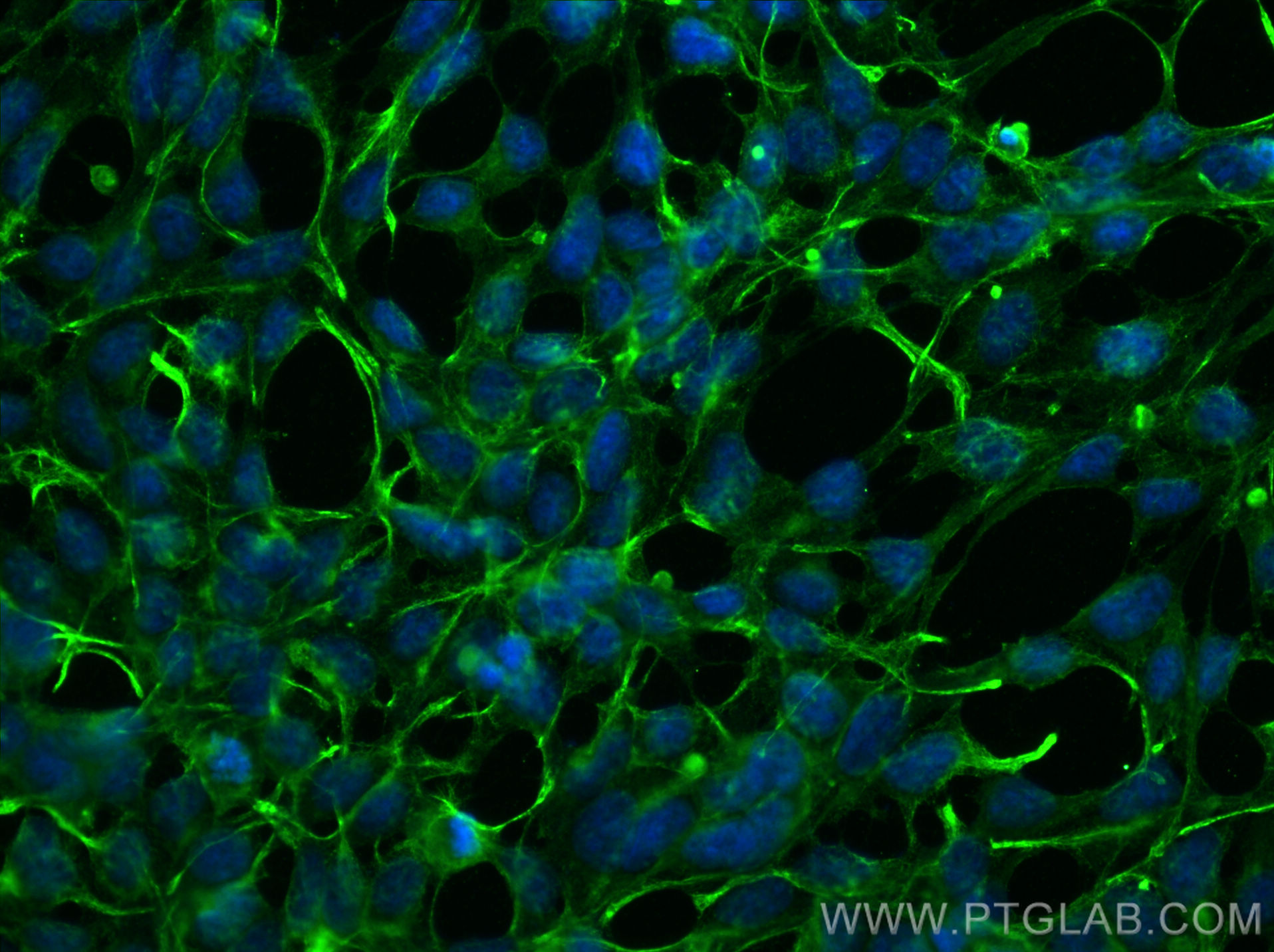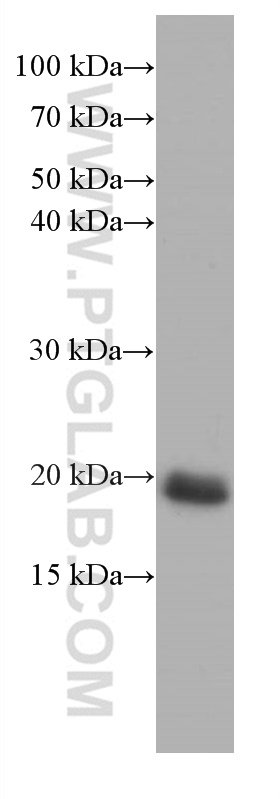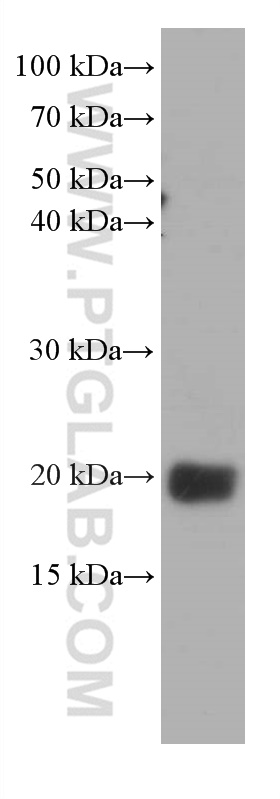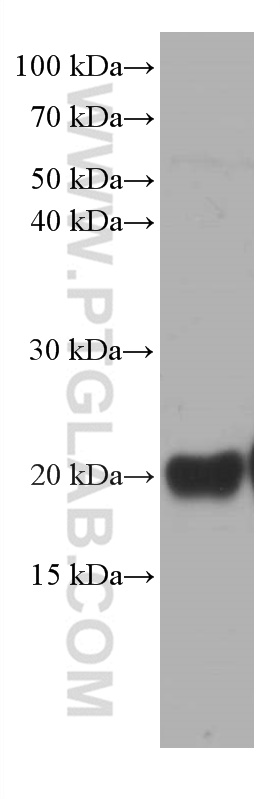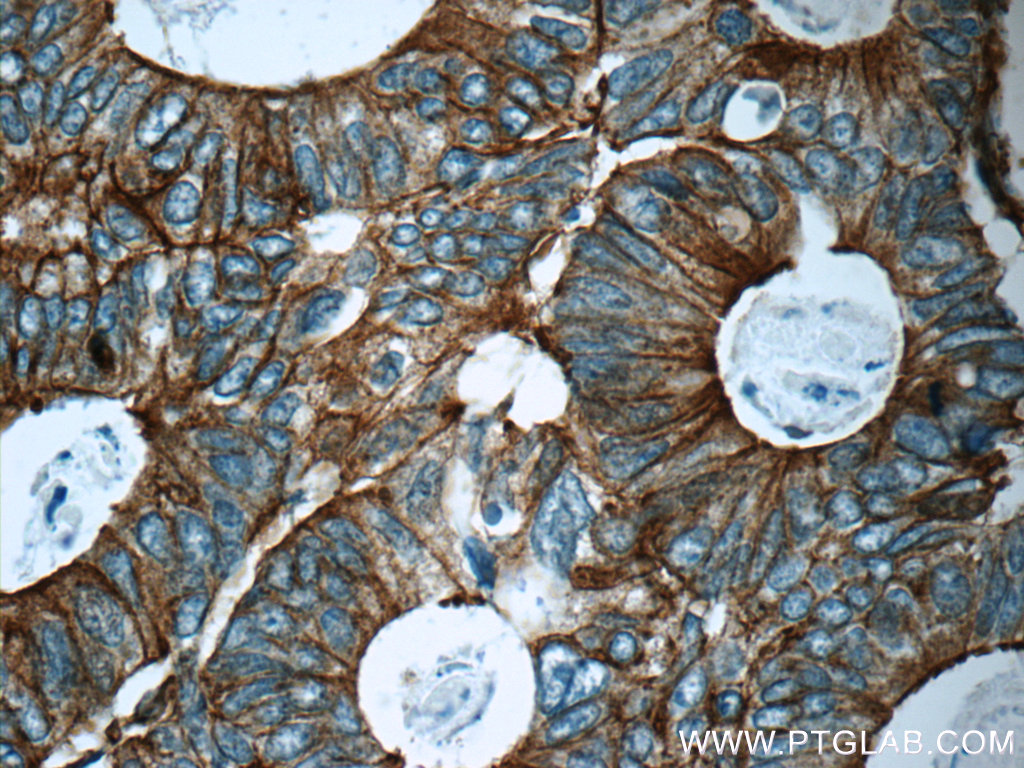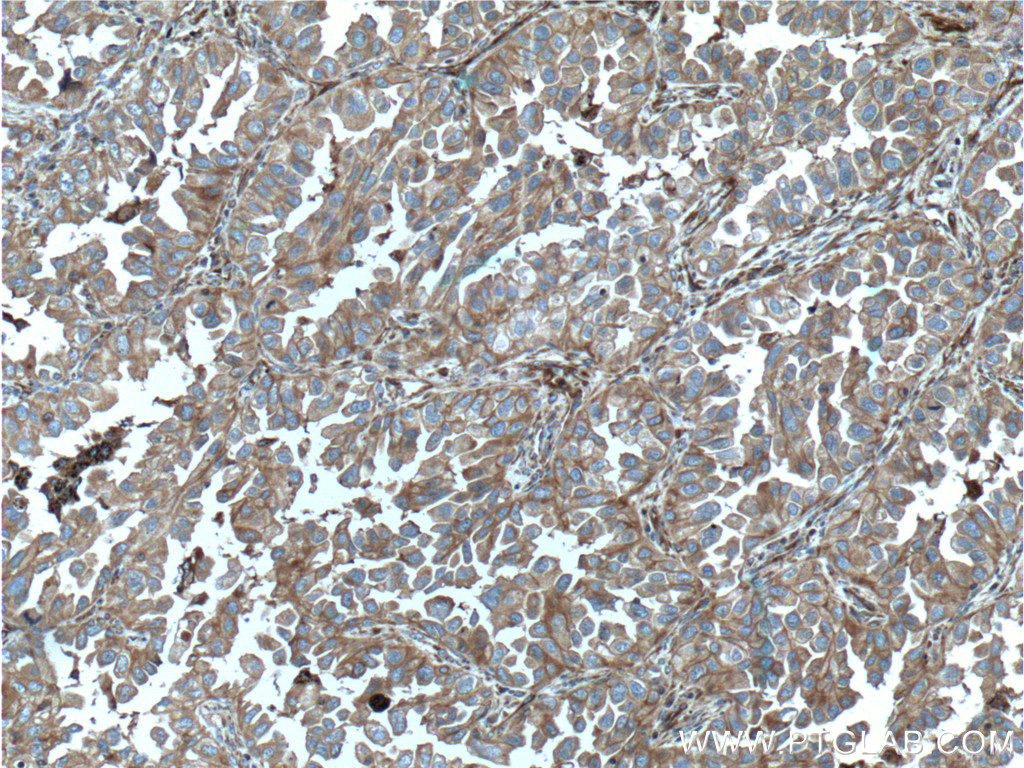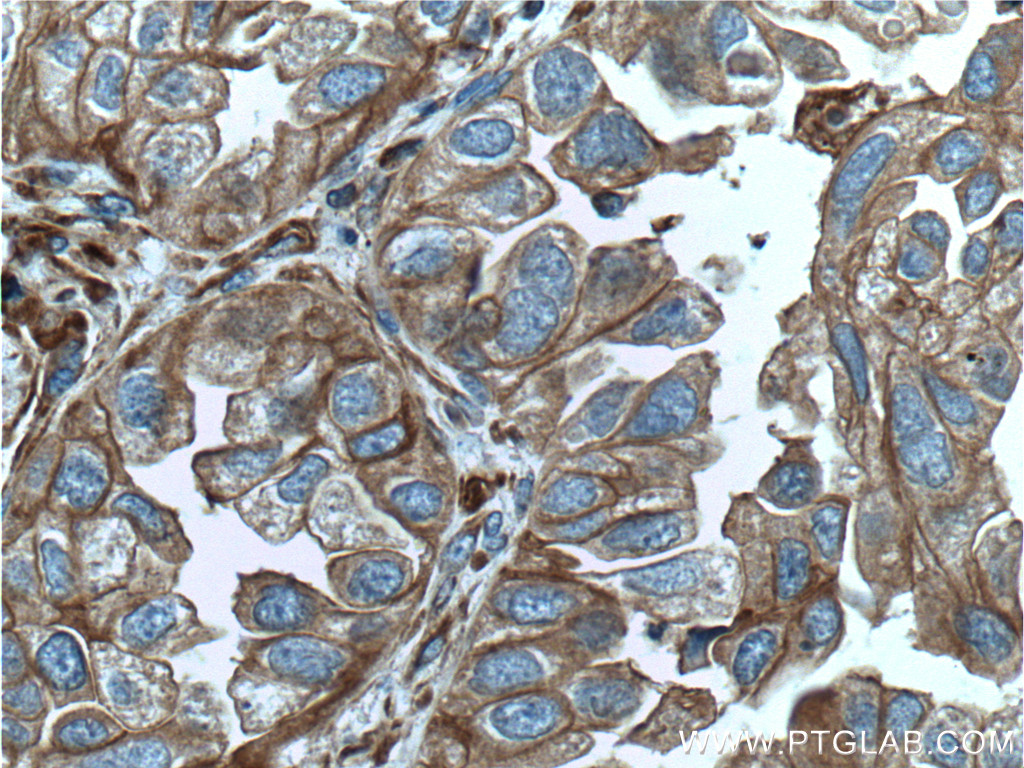验证数据展示
经过测试的应用
| Positive WB detected in | fetal human brain tissue, pig brain tissue, HEK-293 cells, Neuro-2a cells, ROS1728 cells, rabbit brain tissue, rat brain tissue, mouse brain tissue, chicken brain tissue, human brain tissue |
| Positive IP detected in | mouse brain tissue |
| Positive IHC detected in | human breast cancer tissue, human colon cancer tissue, human lung cancer tissue, human ovary cancer tissue Note: suggested antigen retrieval with TE buffer pH 9.0; (*) Alternatively, antigen retrieval may be performed with citrate buffer pH 6.0 |
| Positive IF/ICC detected in | HEK-293 cells |
| Positive FC (Intra) detected in | HeLa cells |
推荐稀释比
| 应用 | 推荐稀释比 |
|---|---|
| Western Blot (WB) | WB : 1:20000-1:50000 |
| Immunoprecipitation (IP) | IP : 0.5-4.0 ug for 1.0-3.0 mg of total protein lysate |
| Immunohistochemistry (IHC) | IHC : 1:50-1:500 |
| Immunofluorescence (IF)/ICC | IF/ICC : 1:400-1:1600 |
| Flow Cytometry (FC) (INTRA) | FC (INTRA) : 0.40 ug per 10^6 cells in a 100 µl suspension |
| It is recommended that this reagent should be titrated in each testing system to obtain optimal results. | |
| Sample-dependent, Check data in validation data gallery. | |
产品信息
60309-1-Ig targets pan Ras in WB, IHC, IF/ICC, FC (Intra), IP, ELISA applications and shows reactivity with human, mouse, rat, pig, rabbit, chicken samples.
| 经测试应用 | WB, IHC, IF/ICC, FC (Intra), IP, ELISA Application Description |
| 文献引用应用 | WB, IHC, IF |
| 经测试反应性 | human, mouse, rat, pig, rabbit, chicken |
| 文献引用反应性 | human, mouse, rat, pig |
| 免疫原 |
CatNo: Ag2700 Product name: Recombinant human KRAS protein Source: e coli.-derived, PGEX-4T Tag: GST Domain: 1-188 aa of BC013572 Sequence: MTEYKLVVVGAGGVGKSALTIQLIQNHFVDEYDPTIEDSYRKQVVIDGETCLLDILDTAGHEEYSAMRDQYMRTGEGFLCVFAINNTKSFEDIHHYREQIKRVKDSEDVPMVLVGNKCDLPSRTVDTKQAQDLARSYGIPFIETSAKTRQGVDDAFYTLVREIRKHKEKMSKDGKKKKKKSKTKCVIM 种属同源性预测 |
| 宿主/亚型 | Mouse / IgG1 |
| 抗体类别 | Monoclonal |
| 产品类型 | Antibody |
| 全称 | v-Ki-ras2 Kirsten rat sarcoma viral oncogene homolog |
| 别名 | KRAS, 4H4G7, C K RAS, c Ki ras, c-Ki-ras |
| 计算分子量 | 188 aa, 21 kDa |
| 观测分子量 | 21 kDa |
| GenBank蛋白编号 | BC013572 |
| 基因名称 | KRAS |
| Gene ID (NCBI) | 3845 |
| RRID | AB_2881422 |
| 偶联类型 | Unconjugated |
| 形式 | Liquid |
| 纯化方式 | Protein G purification |
| UNIPROT ID | P01116 |
| 储存缓冲液 | PBS with 0.02% sodium azide and 50% glycerol, pH 7.3. |
| 储存条件 | Store at -20°C. Stable for one year after shipment. Aliquoting is unnecessary for -20oC storage. |
背景介绍
The 21 kDa guanine-nucleotide binding proteins (K-Ras, H-Ras, and N-Ras) belong to the Ras oncogene family, whose members are related to the transforming genes of mammalian sarcoma retroviruses. K-Ras, H-Ras, and N-Ras have similar structure and sequences. These proteins can bind GTP and GDP, and they have intrinsic GTPase activity. The ras genes are ubiquitously expressed although mRNA analysis suggests different level expression in tissue. Mutations in each ras gene frequently were found in different tumors, suggesting their involvement in the development of specific neoplasia. This antibody can recognize K-Ras, H-Ras, and N-Ras.
实验方案
| Product Specific Protocols | |
|---|---|
| IF protocol for pan Ras antibody 60309-1-Ig | Download protocol |
| IHC protocol for pan Ras antibody 60309-1-Ig | Download protocol |
| IP protocol for pan Ras antibody 60309-1-Ig | Download protocol |
| WB protocol for pan Ras antibody 60309-1-Ig | Download protocol |
| Standard Protocols | |
|---|---|
| Click here to view our Standard Protocols |
发表文章
| Species | Application | Title |
|---|---|---|
Mol Cell TCR activation directly stimulates PYGB-dependent glycogenolysis to fuel the early recall response in CD8+ memory T cells. | ||
Cancer Res KRAS-NFκB-YY1-miR-489 signaling axis controls pancreatic cancer metastasis.
| ||
Exp Mol Med Destabilization of β-catenin and RAS by targeting the Wnt/β-catenin pathway as a potential treatment for triple-negative breast cancer. | ||
J Cell Mol Med DEPDC1 up-regulates RAS expression to inhibit autophagy in lung adenocarcinoma cells. | ||
Mol Pharm Hyaluronic Acid-Modified Nanoparticles Self-Assembled from Linoleic Acid-Conjugated Chitosan for the Codelivery of miR34a and Doxorubicin in Resistant Breast Cancer | ||
Oncol Rep EGF upregulates RFPL3 and hTERT via the MEK signaling pathway in non‑small cell lung cancer cells. |

